Understanding the Influence of Built Environment Indicators on Transit-Oriented Development Performance According to the Literature from 2000 to 2023
Abstract
1. Introduction
- (1)
- Which built environment indicators exhibit universality across TOD performance indicators (traffic, economic, environmental, and social)?
- (2)
- How can the correlation effects among built environment indicators be leveraged to more effectively enhance TOD performance?
- (3)
- Given the variability in TOD project performance, which built environment characteristics can effectively improve TOD performance?
2. Methods
3. Results
3.1. Input Elements of TOD Performance Evaluation
- As illustrated in Figure 2 and Appendix A Table A1, it is evident that numerous case studies have validated the effects of the “5D” dimension indicators proposed by Cervero et al. (2009) on TOD performance [21]. Moreover, the elements of the “5D” framework have been enriched and refined, exhibiting an improving research trend. Indicators such as pedestrian shelters, street design/geometry, the design of bus stops, the closeness centrality of stations, the betweenness centrality of stations, and the density of open space have been confirmed to influence TOD performance in transit station areas. In addition to the “5D” dimension indicators, some studies have revealed the influences of key indicators of node characters (e.g., the accessibility of the transit station, the distance to the central business district (CBD), the closeness and betweenness centrality of the station, etc.) on TOD performance, which can promote a comprehensive analysis of the different performance of TOD projects.
- 2.
- The connections among different input indicators, as shown in Figure 2, and the associations among the indicators, as listed in Appendix A Table A1, reveal significant differences in TOD performance based on built environment indicators. Moreover, the same built environment indicator may exert different influences on different TOD performance indicators. The efficiency of TOD is significantly influenced by several built environment indicators. Key indicators include the population density, diversity of land use, employment density, community livability, distance to transit stations, and development density. Among these, the distance to transit stations has been extensively studied, with approximately 50 studies verifying its influence on TOD performance [4,27,37,38]. This indicator has the most significant effect on traffic performance within TOD, although its direct impact on environmental performance remains less empirically supported.
- 3.
- The cliques formed among different input indicators, as shown in Figure 3, reveal symbiotic coexistence and mutual influence relationships among various built environment indicators. In the present analysis of TOD performance, the values of association among different inputs were obtained by calculating the degree of centrality of each key input constituting a clique. This approach made it possible to clarify and measure the features of associations among different indicators of the built environment, as indicated by a large number of empirical studies. This is evidenced in Figure 3a, in which factors such as the population density, diversity of land use, residential density, development density, density of retail facilities, closeness centrality of stations, betweenness centrality of stations, and street connectivity exhibit positive correlations. In Figure 3b, the employment density exhibits positive correlations with the diversity of land use, the density of street intersections, the residential density, the betweenness centrality of the station area, the accessibility of the transit station, and the job accessibility.
3.2. Indicators of TOD Performance Evaluation and Their Influencing Factors
- In traffic performance, public transit use (Appendix B, item 4), walking/cycling (Appendix B, item 5), VMT, vehicle use, and pedestrian accessibility have been intensively studied;
- In economic performance, researchers have examined residential property values, land prices/rents, customers/sales, economic activities, and commercial property values;
- In environmental performance, environment satisfaction and energy efficiency have been intensively studied;
- In social performance, researchers have studied residential selection, connections with neighbors, safety, and diverse needs.
3.2.1. TOD Traffic Performance and Its Influencing Factors
- First, related studies have confirmed the different effects of built environment indicators on TOD traffic performance. The most frequently validated input indicators, from highest to lowest frequency, are as follows: population density, diversity of land use, employment density, distance to transit stations, walkability, and the density of street intersections.
- Second, the influences of some built environment indicators on TOD traffic performance exhibit common features. Studies have shown that transit use and walking/cycling in rail station areas can be enhanced by optimizing the population density, employment density, distance to transit station, and diversity of land use. Vehicle use and household VMT can be reduced by improving the employment density, population density, and diversity of land use.
- Third, current studies on TOD traffic performance focus on the public transit share rate (transit use, vehicle use, walking/cycling, etc.) and VMT. Although some studies have addressed performance related to specific traffic behaviors (pedestrian counts, walking distance/time, pedestrian accessibility, efficient mobility, etc.) and their influencing factors, more empirical studies are needed to understand general features. For example, do indicators like the density of street intersections, walkability, pedestrian facilities, street design, and aesthetics universally impact the walking distance/time? Do parking spaces around the station areas, the number of bus stops/routes, the average block size, and the distance to transit stations universally impact transit use?
- Additionally, some built environment indicators were found to exhibit abnormal effects in their relationship with TOD traffic performance indicators. For example, the average block size within a station area is not positively correlated with transit use. High-density street networks with small blocks promote connectivity and walking/cycling. However, as the block size increases to its threshold, low connectivity among blocks reduces transit use [39]. Similarly, the number of parking spaces exhibits a threshold effect; effective parking-space planning must balance convenience with encouraging transit use to ensure reasonable utilization [27].
3.2.2. TOD Economic Performance and Its Influencing Factors
- The distance to the transit station has the most significant direct impact on TOD economic performance, with its negative correlation with economic performance indicators (e.g., residential property values, land prices/rents, commercial property prices) confirmed in many empirical cases;
- Second, other indicators that had a confirmed association with TOD economic performance in some empirical cases should also be used as a reference for performance optimization. These indicators include the following:
- Residential property values are positively correlated with walkability, the density of street intersections, rental units, job accessibility, the area of parking spaces, and retail employment density, but are uncertainly correlated with population density in the station area [41]. In high-density environments, residential property values are positively correlated with population density, with a threshold present. Conversely, in low-density environments, they show a negative correlation [42].
- The economic vitality in station areas could be promoted by improving their employment density, closeness centrality, and betweenness centrality, as well as the closeness and betweenness centrality of the station area and the accessibility of the station space.
3.2.3. TOD Environmental Performance and Its Influencing Factors
- With increases in the diversity of land use and the population density, the environmental burden also intensifies, making it crucial to optimize the land use layout in station areas [44]. Furthermore, high population density development imposes high demands on the spatial environmental carrying capacity [40].
- 2.
- Appropriate development density and diversity of land use can reduce dependence on private vehicles and increase transit use, thus reducing traffic congestion and greenhouse gas emissions [45]; however, development with a high density might lower livability and cause various externalities, such as crowded living and the excessive use of air-conditioning [46]. This principle applies to cities located in both Western and Asian regions.
- 3.
- Optimizing the aesthetic characteristics of station area spaces, enhancing the quality of the walking environment, increasing the accessibility of groceries, and optimizing street design can improve residents’ satisfaction with the TOD environment.
- 4.
- Vibrations and noise generated by the operation of TOD station areas can easily be transmitted to nearby buildings, becoming a major environmental issue that triggers resident complaints and severely affects their quality of life and health [47].
3.2.4. TOD Social Performance and Its Influencing Factors
- The positive impacts of improving the distance to transit stations and access to amenities, groceries, and schools were found to be consistent in multiple studies.
- Studies on other indicators of social performance and their influencing factors are rare; nonetheless, the existing findings provide basic empirical references for future research to optimize the social performance indicators of TOD.
- Population density, employment density, and residential density are particularly crucial for TOD social performance. These indicators not only have direct impacts on specific social performance indicators, but also have close correlations with other influencing factors.
- Walkability, the development density, the distance to transit stations, and the diversity of land use also significantly influence TOD social performance. These factors have notable correlations with TOD social performance indicators, thus confirming their impacts on specific aspects of TOD social performance.
- The accessibility of groceries, amenities, and schools, as well as similar indicators, should be considered as reference points for optimizing TOD social performance due to their associative impacts on specific TOD social performance indicators.
3.3. Factors of Comprehensive TOD Performance
- First, among the 41 indicators and in addition to the “5D” dimension indicators, the 4 indicators that characterize the features of rail transit stations are the accessibility of the transit station, the distance to the CBD, the closeness centrality of the station, and the betweenness centrality of the station. These indicators were included and defined as “node characters”.
- Second, node characters can better depict the location of rail stations in an urban space, their ranking among rail transport structures, and the spatial accessibility within local transportation networks and surrounding rail stations. They also exhibit associations with the “3D” dimension indicators (density, diversity, and design) and demonstrate the differences among rail stations in TOD construction.
- Third, cross-dimensional, interdependent, and interactive associations were found to exist between the six key input indicators and the other indicators. Therefore, studying the influences of the input indicators in the “5D” dimensions and the node characters dimensions on TOD performance (traffic, economic, environmental, and social performance) and their associative characteristics can provide a more targeted theoretical basis for TOD construction and performance optimization in transit station areas.
4. Discussion
4.1. Ensuring TOD Performance Through “Density” Strategies
4.2. Ensuring TOD Performance Through “Diversity” Strategies
4.3. Ensuring TOD Performance Through “Design” Strategies
4.4. Ensuring TOD Performance Through “Distance to Transit” Strategies
5. Conclusions
Author Contributions
Funding
Institutional Review Board Statement
Informed Consent Statement
Data Availability Statement
Conflicts of Interest
Appendix A
| Traffic | Economic | Environment | Social | Overall | ||||||||||
|---|---|---|---|---|---|---|---|---|---|---|---|---|---|---|
| DCI | DCO | CL | DCI | DCO | CL | DCI | DCO | CL | DCI | DCO | CL | DCI | CL | |
| Residential density | 14 | 11 | B | 11 | 1 | C | 9 | 2 | C | 9 | 3 | A | 14 | B |
| Development density | 16 | 17 | B | 13 | 4 | C | 10 | 4 | B | 12 | 5 | B | 16 | A |
| Building coverage ratio | 0 | 3 | D | 0 | 1 | D | 0 | B | ||||||
| Population density | 32 | 54 | A | 28 | 4 | B | 17 | 4 | A | 22 | 4 | A | 33 | A |
| Employment density | 22 | 47 | A | 19 | 3 | B | 10 | 3 | B | 13 | 3 | A | 22 | A |
| Area of retail facilities | 13 | 13 | B | 10 | 2 | C | 7 | 1 | D | 13 | B | |||
| Retail employment density | 2 | 5 | D | 2 | 3 | D | 1 | 1 | D | 2 | 2 | D | 2 | B |
| Density of business | 5 | 1 | C | 3 | 1 | D | 5 | B | ||||||
| Average area of building complexes | 4 | 1 | C | 4 | B | |||||||||
| Job accessibility | 3 | 10 | D | 2 | 2 | D | 2 | 1 | D | 3 | B | |||
| Residential accessibility | 1 | 6 | D | 1 | B | |||||||||
| Accessibility of bus stops | 0 | 1 | D | 0 | 1 | D | 0 | 1 | D | 0 | B | |||
| Visibility of destination | 0 | 2 | D | 0 | B | |||||||||
| Accessibility of groceries | 1 | 14 | D | 0 | 1 | D | 0 | 1 | D | 0 | 3 | C | 1 | B |
| Accessibility of amenities | 2 | 6 | D | 1 | 3 | D | 1 | 4 | C | 2 | B | |||
| Accessibility of schools | 2 | 4 | D | 1 | 2 | D | 1 | 1 | D | 1 | 3 | C | 2 | B |
| Accessibility of public safety facilities | 3 | B | ||||||||||||
| Vertical mixed use | 1 | 6 | D | 0 | 1 | D | 1 | B | ||||||
| Diversity of land use | 25 | 50 | A | 20 | 11 | B | 13 | 5 | A | 14 | 8 | B | 25 | A |
| Rental units | 1 | 1 | D | 1 | 1 | D | 1 | B | ||||||
| Residential land use | 6 | 1 | C | 3 | 1 | D | 6 | B | ||||||
| Commercial land use | 7 | 2 | C | 4 | 1 | D | 7 | B | ||||||
| Industrial land use | 5 | 2 | C | 5 | B | |||||||||
| Mixed-use land use | 4 | 3 | C | 4 | B | |||||||||
| Area of service facilities | 1 | 1 | D | 0 | 1 | D | 1 | B | ||||||
| Mix of housing types | 0 | 3 | C | 1 | B | |||||||||
| Balance between residence and employment | 5 | 3 | C | 5 | B | |||||||||
| Mixed income | 1 | 1 | D | 0 | 1 | D | 1 | B | ||||||
| Educational land use | 0 | 1 | D | 0 | B | |||||||||
| Walkability | 10 | 29 | B | 5 | 4 | C | 2 | 1 | D | 1 | 7 | B | 11 | A |
| Cyclability | 0 | 10 | D | 0 | 1 | D | 0 | B | ||||||
| Average block size | 0 | 6 | D | 0 | 1 | D | 0 | 1 | D | 0 | B | |||
| Density of street intersections | 15 | 29 | B | 12 | 2 | C | 15 | B | ||||||
| Street connectivity | 7 | 7 | C | 1 | 1 | D | 7 | B | ||||||
| Density of open spaces | 4 | 1 | C | 3 | 2 | D | 1 | 1 | D | 2 | 3 | C | 5 | B |
| Density of cul-de-sacs | 2 | 5 | D | 2 | B | |||||||||
| Sidewalk maintenance | 1 | B | ||||||||||||
| Width of pedestrian sidewalks | 2 | 5 | D | 2 | B | |||||||||
| Area of pedestrian sidewalks | 5 | 4 | C | 5 | 1 | C | 6 | B | ||||||
| Parking spaces | 3 | 8 | D | 1 | 2 | D | 1 | 1 | D | 3 | B | |||
| Closeness centrality of station areas | 6 | 1 | C | 6 | 1 | C | 6 | B | ||||||
| Betweenness centrality of station areas | 7 | 1 | C | 7 | 1 | C | 7 | B | ||||||
| Design of bus stops | 2 | 2 | D | 2 | B | |||||||||
| Livability of communities | 16 | 1 | B | 17 | B | |||||||||
| Aesthetics | 0 | 3 | D | 0 | 2 | D | 0 | B | ||||||
| Total road length | 7 | 6 | C | 5 | 2 | C | 2 | 1 | D | 7 | B | |||
| Total length of minor roads | 1 | 5 | D | 1 | 1 | D | 1 | B | ||||||
| Total length of major roads | 1 | 3 | D | 1 | B | |||||||||
| Street design/geometry | 2 | 4 | D | 2 | B | |||||||||
| Pedestrian shelters | 0 | 2 | D | 0 | 1 | D | 0 | B | ||||||
| Pedestrian facilities | 3 | 5 | D | 3 | B | |||||||||
| Interchange station | 0 | 1 | D | 0 | B | |||||||||
| Closeness centrality of stations | 4 | 1 | C | 4 | 1 | D | 4 | B | ||||||
| Betweenness centrality of stations | 7 | 2 | C | 7 | 1 | C | 7 | B | ||||||
| Distance to CBD | 8 | 8 | C | 8 | 5 | C | 5 | 1 | D | 8 | B | |||
| Accessibility of transit stations | 11 | 2 | C | 6 | 2 | D | 11 | B | ||||||
| Distance to transit stations | 17 | 43 | A | 17 | 24 | A | 10 | 2 | C | 12 | 6 | B | 17 | A |
| Efficiency of transfer | 1 | 16 | D | 1 | B | |||||||||
| Number of bus stops/routes | 8 | 23 | B | 6 | 2 | C | 8 | B | ||||||
Appendix B
- (1)
- The total distance traveled by a vehicle within a certain period of time is referred to as vehicle miles traveled (VMT). In different literature, the measured indicator is vehicle kilometers traveled (VKT). In this article, we categorized them as VMT.
- (2)
- In reviewing the literature, we found that some indicators, such as population density, development density, and balance between residence and employment, are two-way indicators: they not only depict the conditions of the area for TOD construction but also reflect TOD performance. For the sake of simplification, they were treated as input indicators.
- (3)
- In Figure 2 and Figure 3, the size of each dot represents the total frequency with which the correlation between this indicator and other indicators has been confirmed in the relevant literature. Moreover, the thickness of each line represents the total frequency with which the correlation between the two connected indicators has been confirmed in the relevant literature, without considering the correlations between non-key indicators.
- (4)
- In different studies, transport was categorized into public transport (bus + rail transit), rail transport, sustainable transport (non-motorized travel, i.e., bus + rail transport + walking/cycling), motor vehicle travel and so on. For our research needs, we included the impact of rail transit use in “public transport”.
- (5)
- In many studies, the effect of TOD inputs on walking and cycling was combined in discussions; for the sake of simplification, the present study included the impact of walking activities in “walking/cycling”.
- (6)
- In Figure 5, Figure 7, Figure 9, and Figure 11, the dot size represents the total frequency with which the correlations between the performance indicator and factors which influence it have been verified in the extant research, and the line thickness represents the total frequency with which the relationship between the two connecting indicators has been verified.
References
- Calthorpe, P. The Next American Metropolis: Ecology, Community, and the American Dream; Princeton Architectural Press: Hudson, NY, USA, 1993; ISBN 9781878271686. [Google Scholar]
- Cervero, R. Transit-oriented development in the US: Contemporary practices, impacts and policy directions. In Incentives, Regulations and Plans: The Role of States and Nation-States in Smart Growth Planning; Knaap, G.-J., Haccoû, H.A., Eds.; Edward Elgar Publishing: Cheltenham, UK, 2007; pp. 149–167. [Google Scholar]
- Sun, Z.; Allan, A.; Zou, X.; Scrafton, D. Scientometric Analysis and Mapping of Transit-Oriented Development Studies. Plan. Pract. Res. 2022, 37, 35–60. [Google Scholar] [CrossRef]
- Alquhtani, S.; Anjomani, A. Do Rail Transit Stations Affect the Population Density Changes around Them? The Case of Dallas-Fort Worth Metropolitan Area. Sustainability 2021, 13, 3355. [Google Scholar] [CrossRef]
- Rao, F.; Pafka, E. Shopping Morphologies of Urban Transit Station Areas: A Comparative Study of Central City Station Catchments in Toronto, San Francisco, and Melbourne. J. Transp. Geogr. 2021, 96, 103156. [Google Scholar] [CrossRef]
- Zandiatashbar, A.; Hamidi, S.; Foster, N.; Park, K. The Missing Link between Place and Productivity? The Impact of Transit-Oriented Development on the Knowledge and Creative Economy. J. Plan. Educ. Res. 2019, 39, 429–441. [Google Scholar] [CrossRef]
- Appleyard, B.S.; Frost, A.R.; Allen, C. Are All Transit Stations Equal and Equitable? Calculating Sustainability, Livability, Health, & Equity Performance of Smart Growth & Transit-Oriented-Development (TOD). J. Transp. Health 2019, 14, 100584. [Google Scholar]
- Li, C.-N.; Lin, C.; Hsieh, T.-K. TOD District Planning Based on Residents’ Perspectives. ISPRS Int. J. Geo-Inf. 2016, 5, 52. [Google Scholar] [CrossRef]
- Nasri, A.; Carrion, C.; Zhang, L.; Baghaei, B. Using Propensity Score Matching Technique to Address Self-Selection in Transit-Oriented Development (TOD) Areas. Transportation 2020, 47, 359–371. [Google Scholar] [CrossRef]
- Kamruzzaman, M.; Wood, L.; Hine, J.; Currie, G.; Giles-Corti, B.; Turrell, G. Patterns of Social Capital Associated with Transit Oriented Development. J. Transp. Geogr. 2014, 35, 144–155. [Google Scholar] [CrossRef]
- Xia, Z.; Zhang, Y. From “5D” to “5D+N”: Research Published in English on the Factors Influencing TOD Performance. Urban Plan. Int. 2019, 34, 109–116. [Google Scholar] [CrossRef]
- Xia, Z.; Zhang, Y.; Xu, L. Influencing Factors and Improvement Strategies of TOD Performance in Rail Transit Station Area. Planners 2019, 35, 5–12. [Google Scholar]
- Zemp, S.; Stauffacher, M.; Lang, D.J.; Scholz, R.W. Classifying Railway Stations for Strategic Transport and Land Use Planning: Context Matters! J. Transp. Geogr. 2011, 19, 670–679. [Google Scholar] [CrossRef]
- Kamruzzaman, M.; Baker, D.; Washington, S.; Turrell, G. Advance Transit Oriented Development Typology: Case Study in Brisbane, Australia. J. Transp. Geogr. 2014, 34, 54–70. [Google Scholar] [CrossRef]
- Timmermans, H. Transit-oriented urban environments reduce travel–a fairytale? In Incentives, Regulations and Plans: The Role of States and Nation-States in Smart Growth Planning; Knaap, G.-J., Haccoû, H.A., Eds.; Edward Elgar Publishing: Cheltenham, UK, 2007; pp. 168–189. [Google Scholar]
- Zhang, Y.; Song, R.; van Nes, R.; He, S.; Yin, W. Identifying Urban Structure Based on Transit-Oriented Development. Sustainability 2019, 11, 7241. [Google Scholar] [CrossRef]
- Akbari, S.; Mahmoud, M.S.; Shalaby, A.; Habib, K.M.N. Empirical Models of Transit Demand with Walk Access/Egress for Planning Transit Oriented Developments around Commuter Rail Stations in the Greater Toronto and Hamilton Area. J. Transp. Geogr. 2018, 68, 1–8. [Google Scholar] [CrossRef]
- Nasri, A.; Zhang, L. The Analysis of Transit-Oriented Development (TOD) in Washington, D.C. and Baltimore Metropolitan Areas. Transp. Policy 2014, 32, 172–179. [Google Scholar] [CrossRef]
- Yin, P.; Cheng, J.; Peng, M. Analyzing the Passenger Flow of Urban Rail Transit Stations by Using Entropy Weight-Grey Correlation Model: A Case Study of Shanghai in China. Mathematics 2022, 10, 3506. [Google Scholar] [CrossRef]
- Cervero, R.; Kockelman, K. Travel Demand and the 3Ds: Density, Diversity, and Design. Transport. Res. Part D-Transport. Environ. 1997, 2, 199–219. [Google Scholar] [CrossRef]
- Cervero, R.; Sarmiento, O.L.; Jacoby, E.; Gomez, L.F.; Neiman, A. Influences of Built Environments on Walking and Cycling: Lessons from Bogotá. Int. J. Sustain. Transp. 2009, 3, 203–226. [Google Scholar] [CrossRef]
- Lyu, G.; Bertolini, L.; Pfeffer, K. Developing a TOD Typology for Beijing Metro Station Areas. J. Transp. Geogr. 2016, 55, 40–50. [Google Scholar] [CrossRef]
- Cervero, R. Transit-Oriented Development in the United States: Experiences, Challenges, and Prospects; Transportation Research Board: Washington, DC, USA, 2004; Volume 102. [Google Scholar]
- Ewing, R.; Cervero, R. Travel and the Built Environment, Journal of the American Planning Association. J. Am. Plan. Assoc. 2010, 3, 265–294. [Google Scholar] [CrossRef]
- Monajem, S.; Ekram Nosratian, F. The Evaluation of the Spatial Integration of Station Areas via the Node Place Model; an Application to Subway Station Areas in Tehran. Transport. Res. Part D-Transport. Environ. 2015, 40, 14–27. [Google Scholar] [CrossRef]
- Xia, J.; Zhang, Y. Where Are Potential Areas for Transit-Oriented Development (TOD)—Exploring the Demands for Built Environment for TOD Planning. Sustainability 2022, 14, 8364. [Google Scholar] [CrossRef]
- Cervero, R. Linking Urban Transport and Land Use in Developing Countries. J. Transp. Land Use 2013, 6, 7–24. [Google Scholar] [CrossRef]
- Yu, B.; Cui, X.; Liu, R.; Luo, P.; Tian, F.; Yang, T. Intergenerational Differences in the Urban Vibrancy of TOD: Impacts of the Built Environment on the Activities of Different Age Groups. Front. Public Health 2022, 10, 994835. [Google Scholar] [CrossRef]
- Ke, L.; Furuya, K.; Luo, S. Case Comparison of Typical Transit-Oriented-Development Stations in Tokyo District in the Context of Sustainability: Spatial Visualization Analysis Based on FAHP and GIS. Sust. Cities Soc. 2021, 68, 102788. [Google Scholar] [CrossRef]
- Uddin, M.A.; Hoque, M.S. A Framework to Measure Transit-Oriented Development around Transit Nodes: Case Study of a Mass Rapid Transit System in Dhaka, Bangladesh. PLoS ONE 2023, 18, e0280275. [Google Scholar] [CrossRef]
- Xiao, L.; Lo, S.; Liu, J.; Zhou, J.; Li, Q. Nonlinear and Synergistic Effects of TOD on Urban Vibrancy: Applying Local Explanations for Gradient Boosting Decision Tree. Sust. Cities Soc. 2021, 72, 103063. [Google Scholar] [CrossRef]
- Dietzenbacher, E.; Velázquez, E. Virtual Water and Water Trade in Andalusia. A Study by Means of an Input-Output Model. Reg. Stud. 2004, 27, 697–711. [Google Scholar]
- Higgins, C.D.; Kanaroglou, P.S. A Latent Class Method for Classifying and Evaluating the Performance of Station Area Transit-Oriented Development in the Toronto Region. J. Transp. Geogr. 2016, 52, 61–72. [Google Scholar] [CrossRef]
- Otte, E.; Rousseau, R. Social Network Analysis: A Powerful Strategy, also for the Information Sciences. J. Inf. Sci. 2002, 28, 441–453. [Google Scholar] [CrossRef]
- Kim, Y.; Choi, T.Y.; Yan, T.; Dooley, K. Structural Investigation of Supply Networks: A Social Network Analysis Approach. J. Oper. Manag. 2011, 29, 194–211. [Google Scholar] [CrossRef]
- Chiu, T.; Fang, D.; Chen, J.; Wang, Y.; Jeris, C. A Robust and Scalable Clustering Algorithm for Mixed Type Attributes in Large Database Environment. In Proceedings of the Seventh ACM SIGKDD International Conference on Knowledge Discovery and Data Mining, New York, NY, USA, 26 August 2001. [Google Scholar]
- Phani Kumar, P.; Ravi Sekhar, C.; Parida, M. Identification of Neighborhood Typology for Potential Transit-Oriented Development. Transport. Res. Part D-Transport. Environ. 2020, 78, 102186. [Google Scholar] [CrossRef]
- Zhang, Q.; Zhang, Y.-J.; Ding, X.; Wang, Q.-P. Correlations between Distribution of Producer Services and Urban Built Environment in Metro Station Areas: A Case of Xi’an, China. Adv. Civ. Eng. 2022, 2022, 6165563. [Google Scholar] [CrossRef]
- Qiang, D.; Zhang, L.; Huang, X. Quantitative Evaluation of TOD Performance Based on Multi-Source Data: A Case Study of Shanghai. Front. Public Health 2022, 10, 820694. [Google Scholar] [CrossRef]
- Wey, W.-M.; Zhang, H.; Chang, Y.-J. Alternative Transit-Oriented Development Evaluation in Sustainable Built Environment Planning. Habitat Int. 2016, 55, 109–123. [Google Scholar] [CrossRef]
- Jiang, Y.; Gu, P.; Cao, Z.; Chen, Y. Impact of Transit-Oriented Development on Residential Property Values around Urban Rail Stations. Transp. Res. Record 2020, 2674, 362–372. [Google Scholar] [CrossRef]
- Mathur, S. Impact of Transit Stations on House Prices across Entire Price Spectrum: A Quantile Regression Approach. Land Use Pol. 2020, 99, 104828. [Google Scholar] [CrossRef]
- Zhai, Z.; Yao, M.; Li, Y. Evaluation of Land-Use Layout of the Rail Station Area Based on the Difference in Noise Sensitivity to Rail Transit, Taking a Suburb of Tokyo as an Example. Sustainability 2022, 14, 7553. [Google Scholar] [CrossRef]
- Dong, S.; Wang, Y.; Dou, M.; Gu, Y.; Zhang, P.; Gong, J. A Multi-objective Land Use Design Framework with Geo-Big Data for Station-Level Transit-Oriented Development Planning. Int. J. Geo-Inf. 2022, 11, 364. [Google Scholar] [CrossRef]
- Irsal, R.M.; Hasibuan, H.S.; Azwar, S.A. Spatial Modeling for Residential Optimization in Dukuh Atas Transit-Oriented Development (TOD) Area, Jakarta, Indonesia. Sustainability 2022, 15, 530. [Google Scholar] [CrossRef]
- Chow, A.S.Y. Urban Design, Transport Sustainability and Residents’ Perceived Sustainability: A Case Study of Transit-Oriented Development in Hong Kong. J. Comp. Asian Dev. 2014, 13, 73–104. [Google Scholar] [CrossRef]
- Liu, Q.; Kang, Z.; Zhang, H.; Song, R.; Li, G. A Case Study on Annoyance Noise Caused by Metro Railway at a TOD Developed Depot. Adv. Civ. Eng. 2022, 2022, 3173567. [Google Scholar] [CrossRef]
- Cervero, R.; Sullivan, C. Green TODs: Marrying Transit-Oriented Development and Green Urbanism. Int. J. Sustain. Dev. World Ecol. 2011, 18, 210–218. [Google Scholar] [CrossRef]
- Tamakloe, R.; Hong, J.; Tak, J. Determinants of Transit-Oriented Development Efficiency Focusing on an Integrated Subway, Bus and Shared-Bicycle System: Application of Simar-Wilson’s Two-Stage Approach. Cities 2021, 108, 102988. [Google Scholar] [CrossRef]
- Ali, L.; Nawaz, A.; Iqbal, S.; Aamir Basheer, M.; Hameed, J.; Albasher, G.; Shah, S.A.R.; Bai, Y. Dynamics of Transit Oriented Development, Role of Greenhouse Gases and Urban Environment: A Study for Management and Policy. Sustainability 2021, 13, 2536. [Google Scholar] [CrossRef]
- Chorus, P.; Bertolini, L. Developing Transit-Oriented Corridors: Insights from Tokyo. Int. J. Sustain. Transp. 2016, 10, 86–95. [Google Scholar] [CrossRef]
- Chan, H.-Y.; Ip, L.-C.; Mansoor, U.; Chen, A. Pedestrian Route Choice with Respect to New Lift-Only Entrances to Underground Space: Case Study of a Metro Station Area in Hilly Terrain in Hong Kong. Tunn. Undergr. Space Technol. 2022, 129, 104678. [Google Scholar] [CrossRef]
- Li, D.; Zang, H.; Yu, D.; He, Q.; Huang, X. Study on the Influence Mechanism and Space Distribution Characteristics of Rail Transit Station Area Accessibility Based on MGWR. Int. J. Environ. Res. Public Health 2023, 20, 1535. [Google Scholar] [CrossRef]



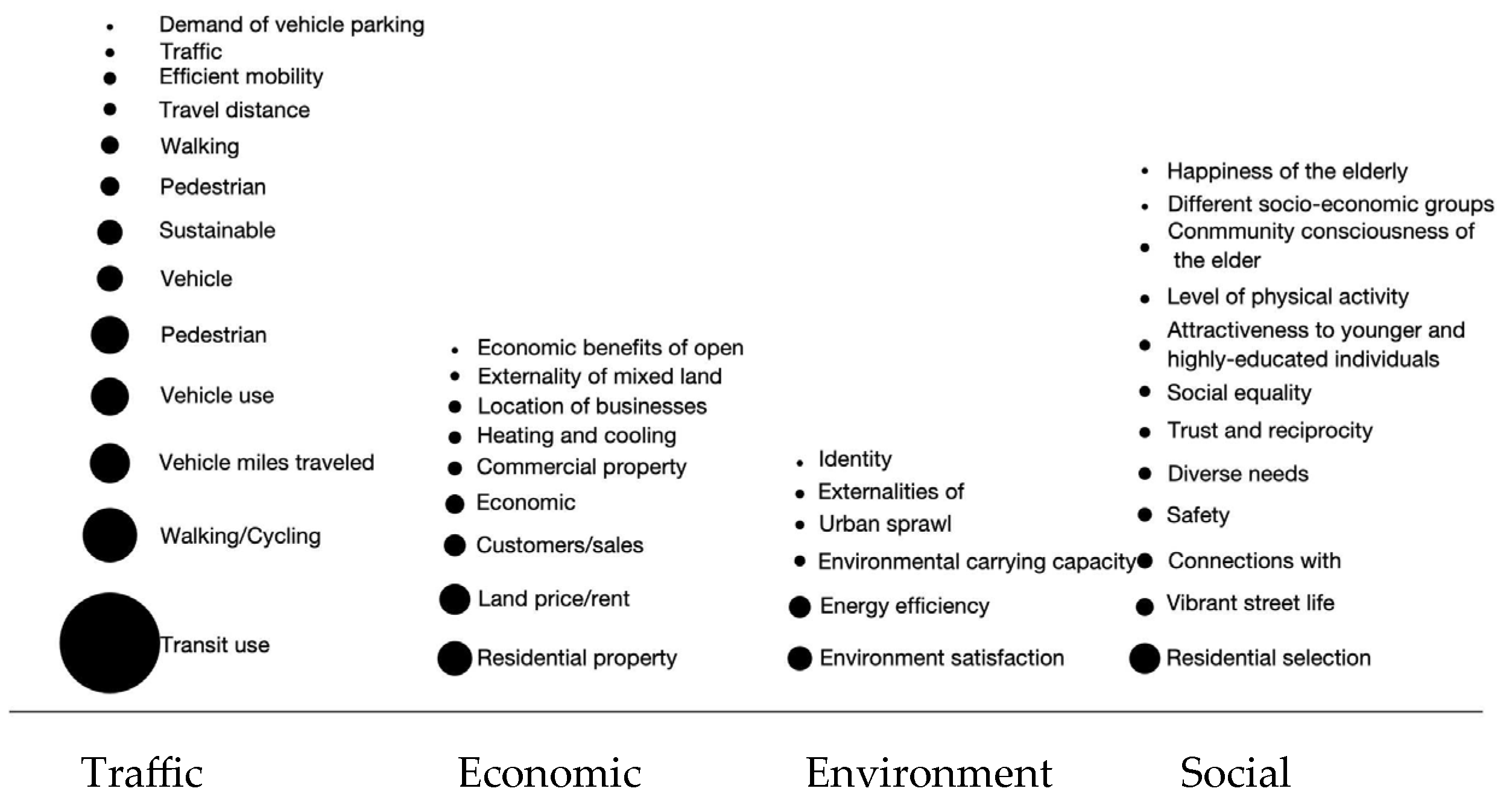
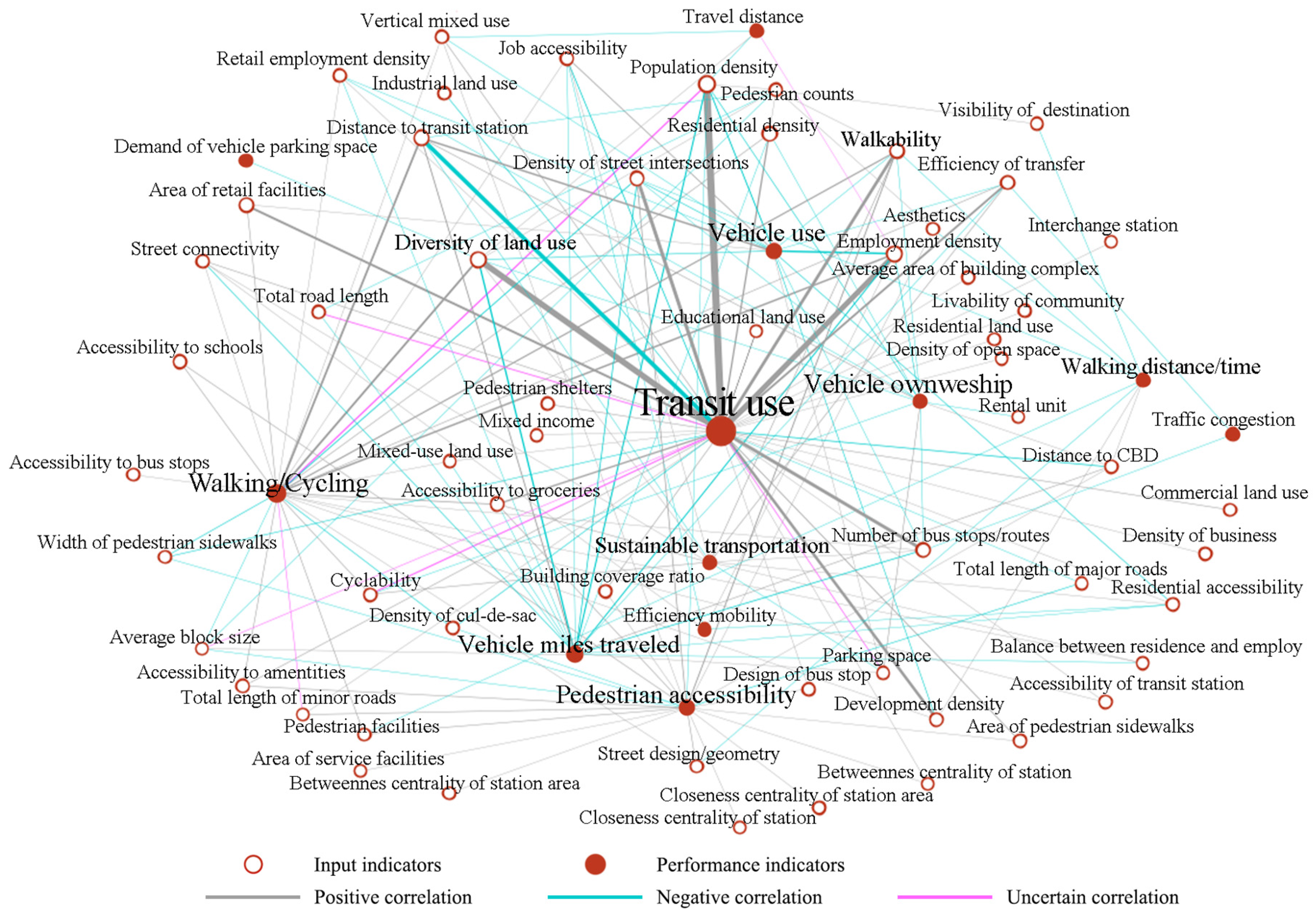


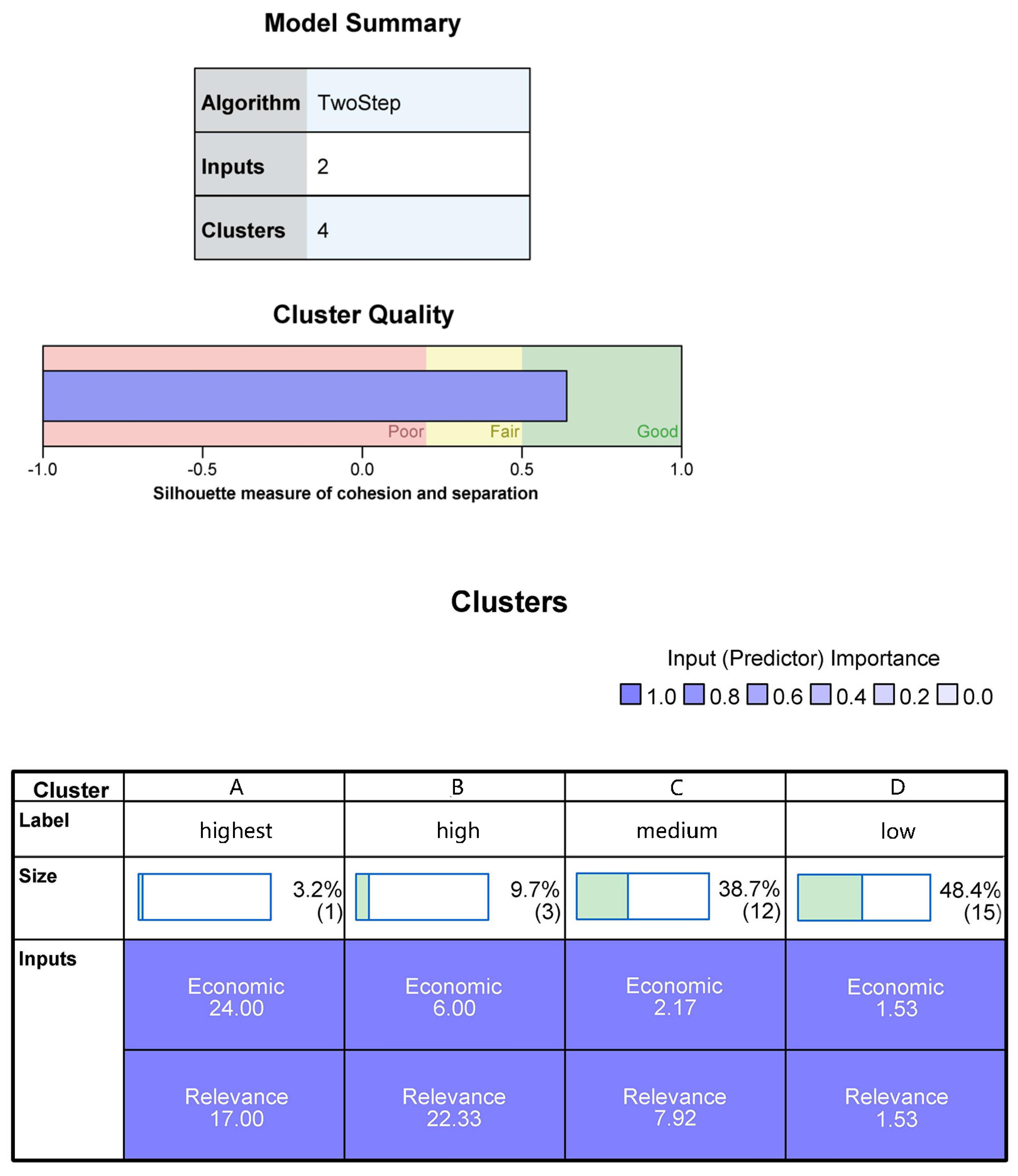
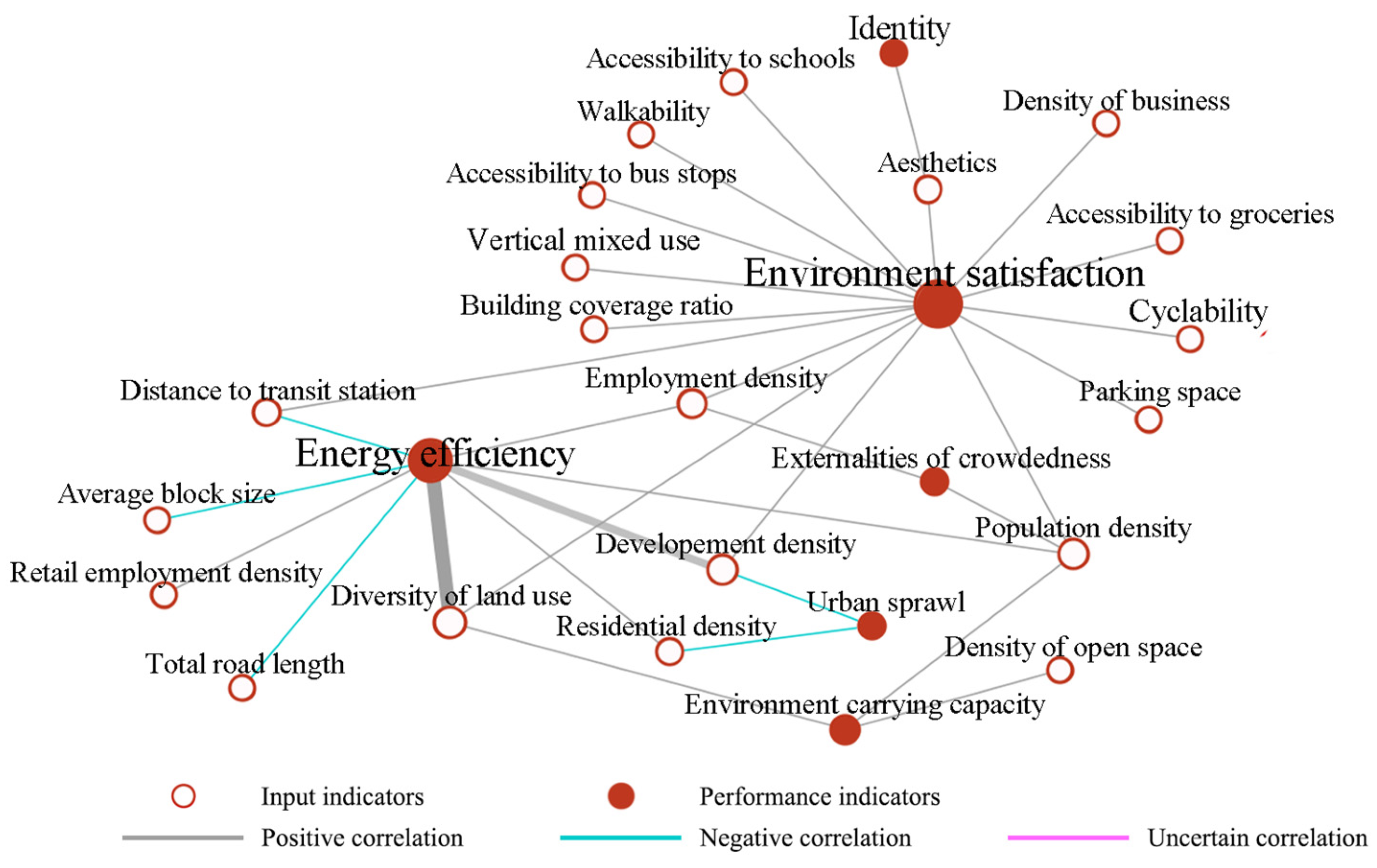
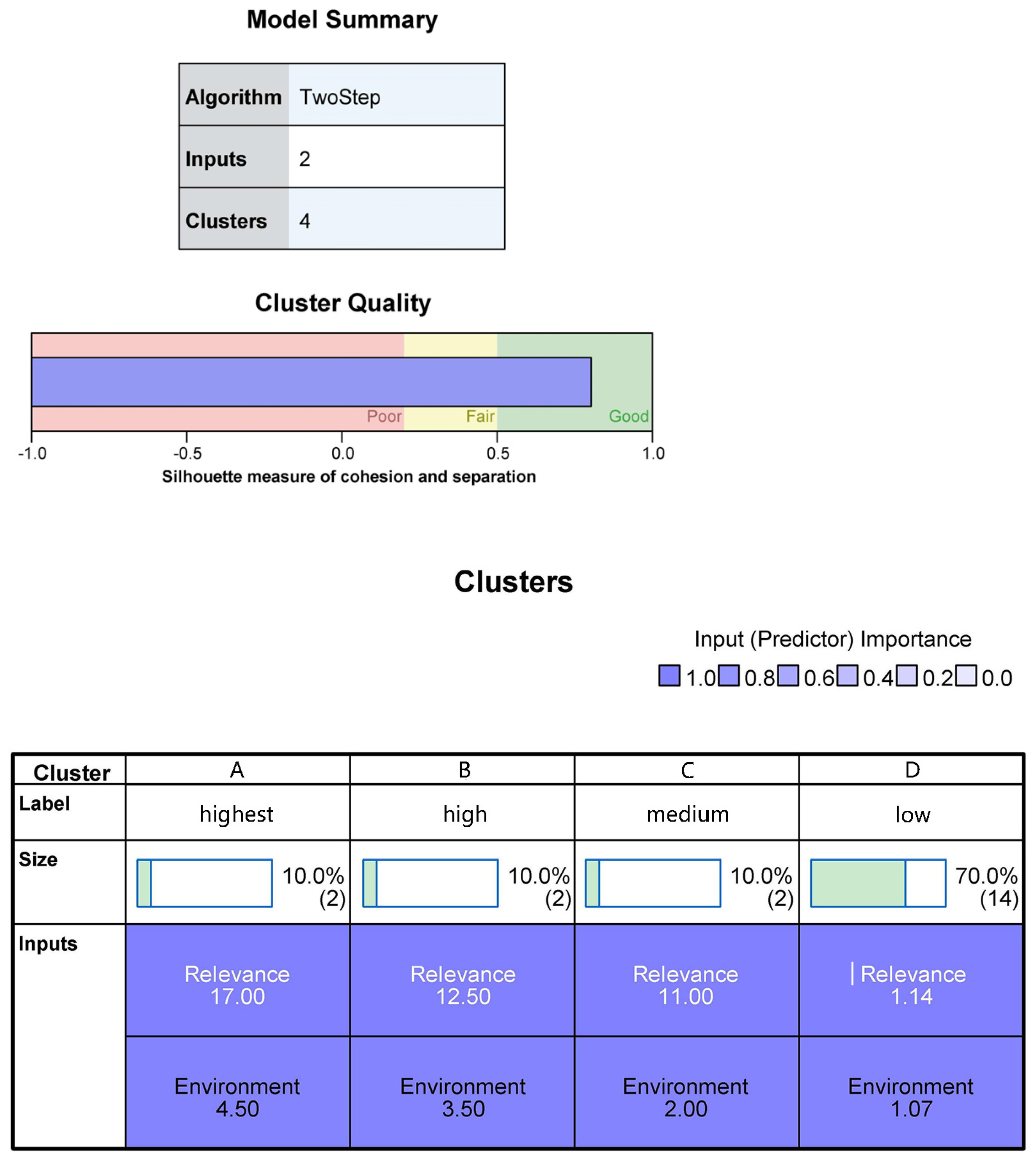
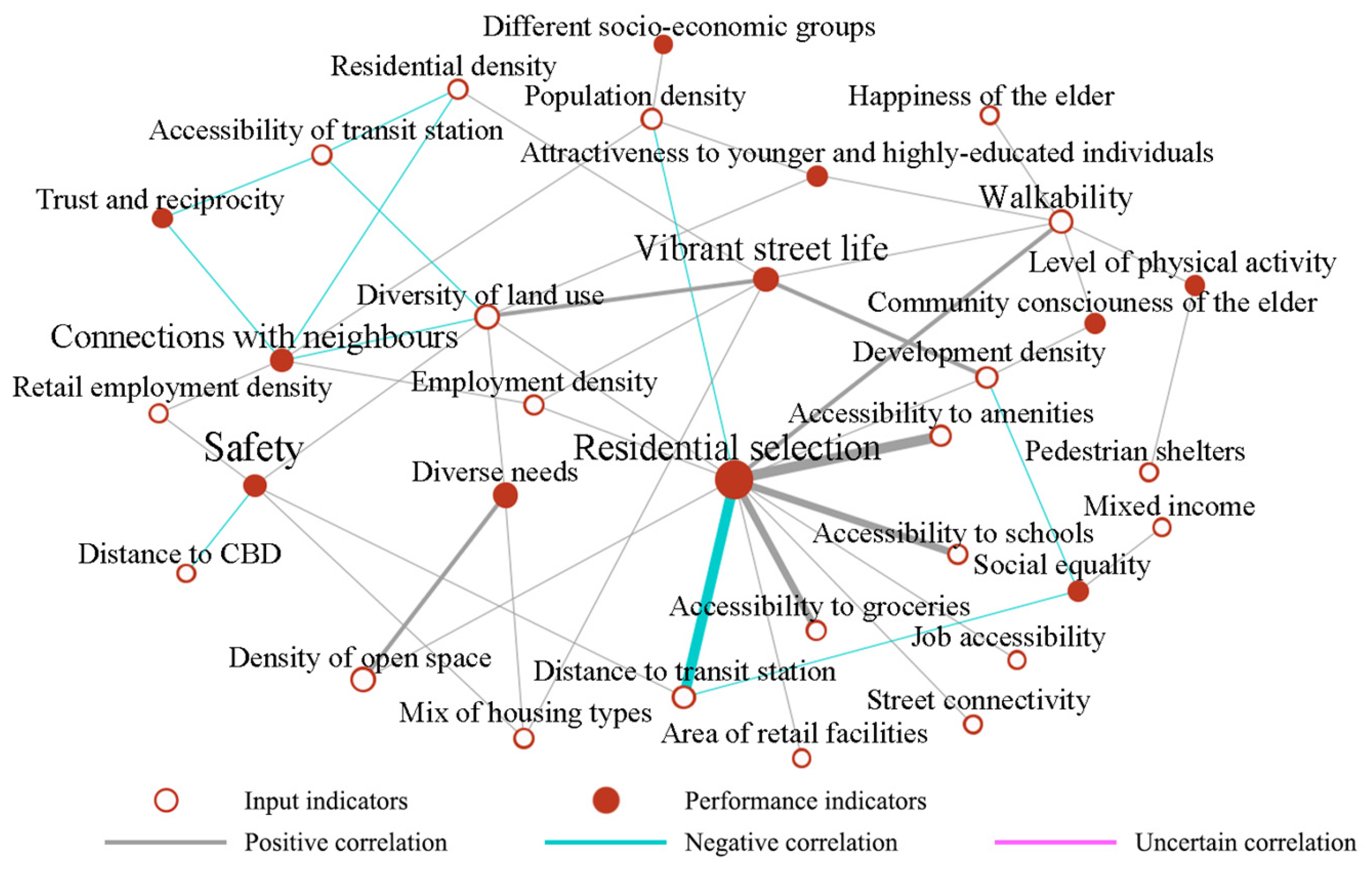
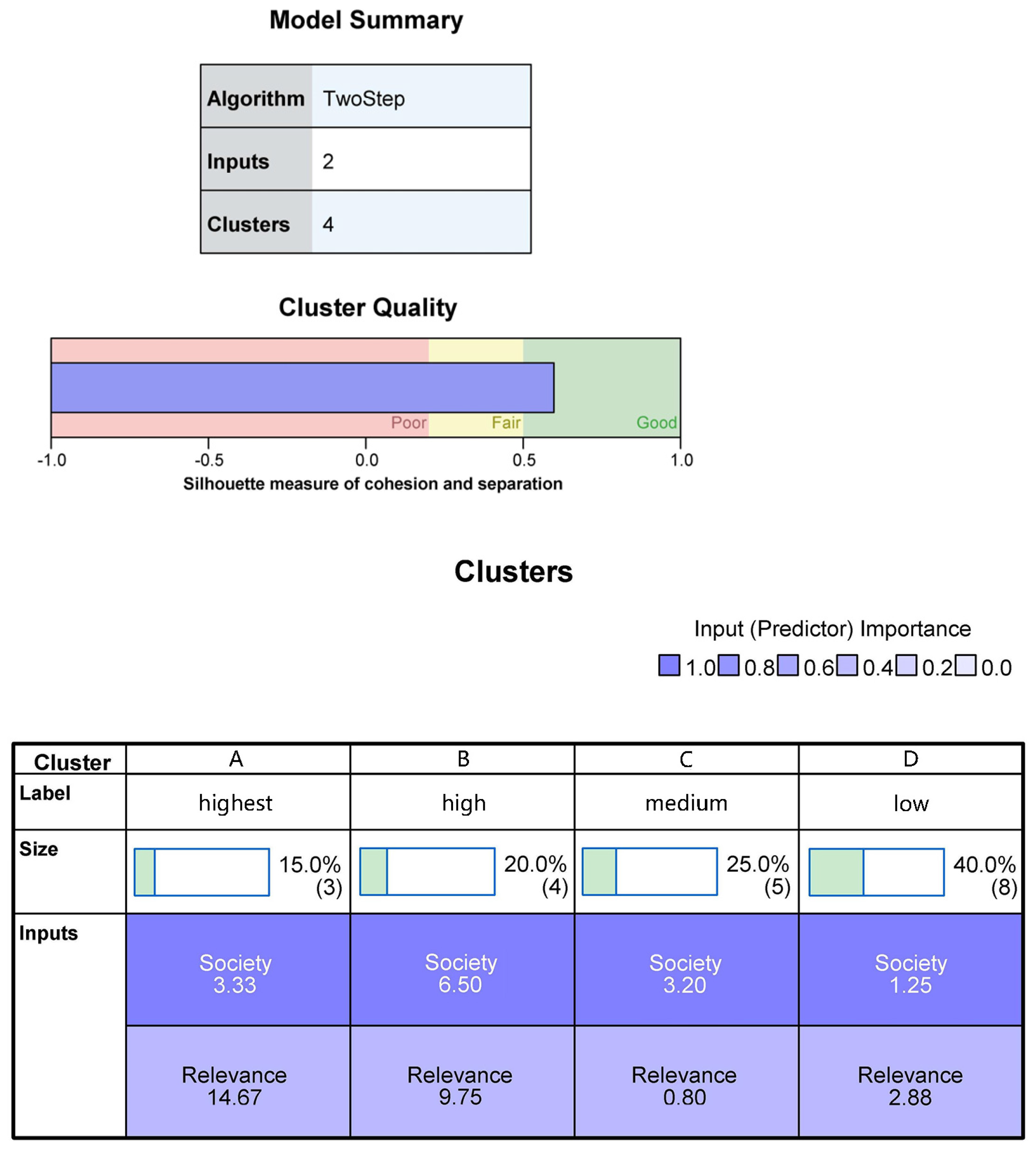
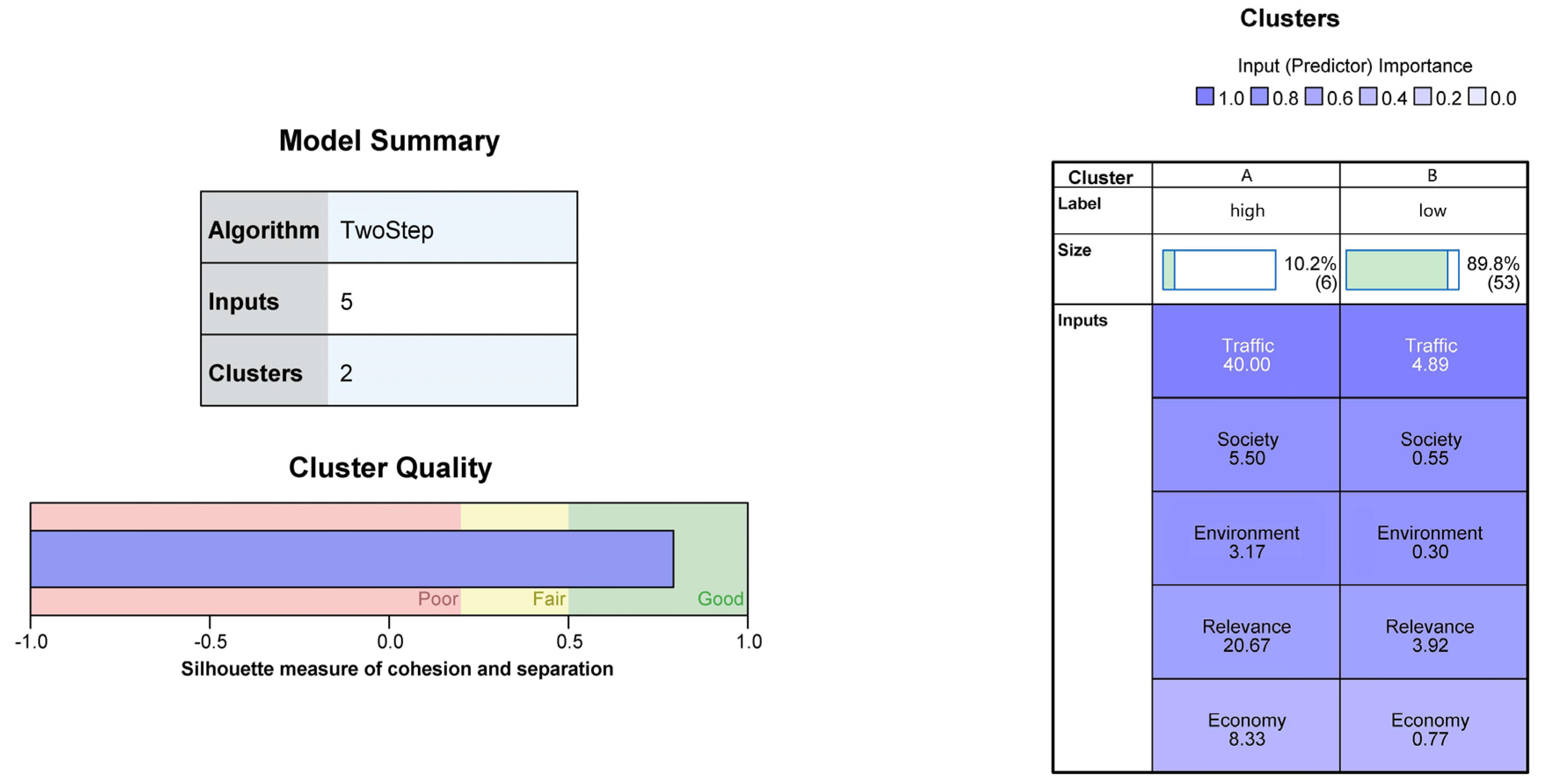
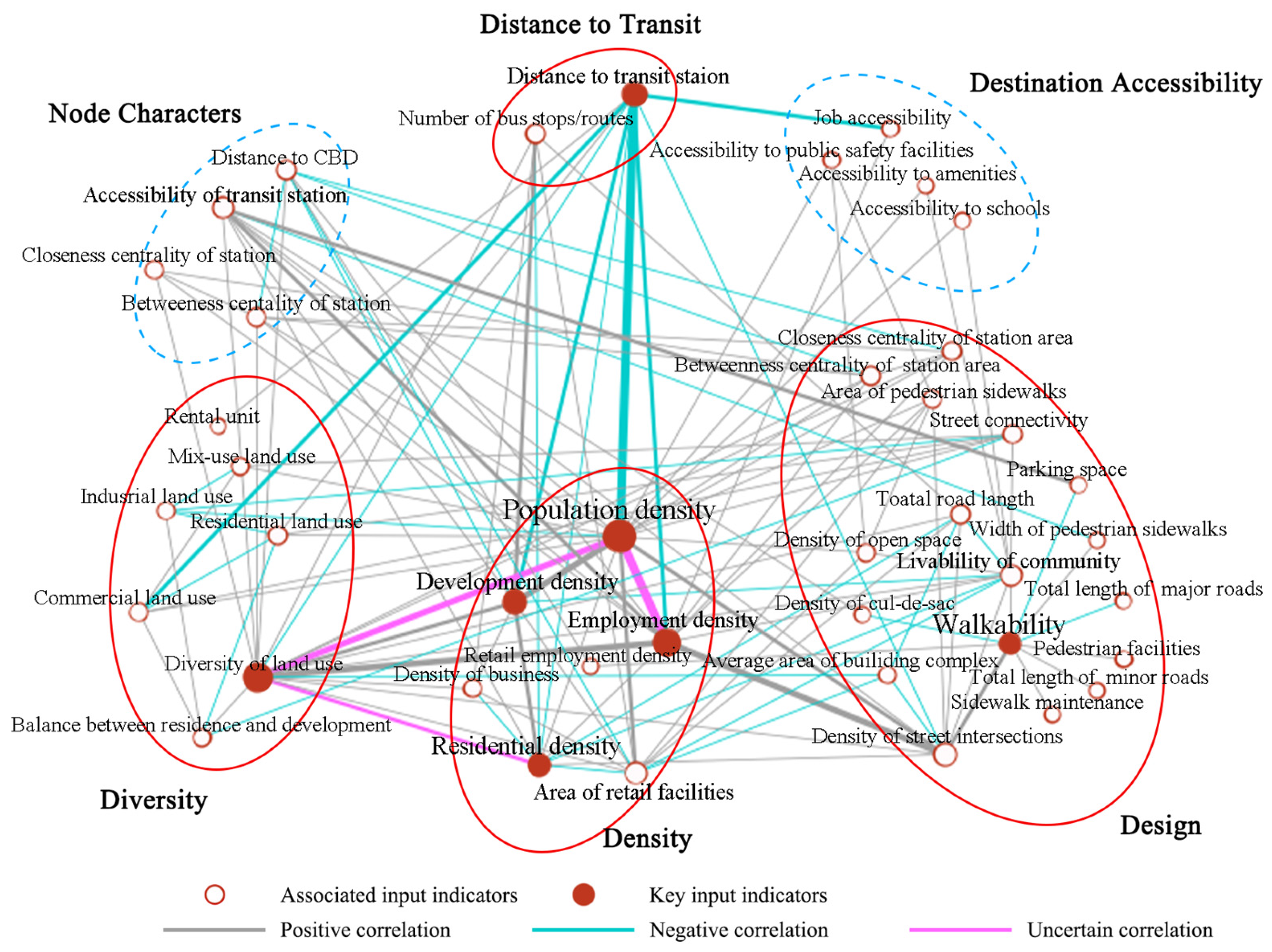
| Main Influential Factors | “5D” Dimensions | TOD Performance | Other Input Elements | ||||
|---|---|---|---|---|---|---|---|
| Traffic | Economic | Environmental | Social | Overall | |||
| Distance to Transit Station | Distance to Transit | Highest | Highest | - | High | High | High |
| Diversity of land use | Diversity | Highest | High | Highest | High | High | Highest |
| Population density | Density | Highest | High | High | Highest | High | Highest |
| Employment density | Density | Highest | High | Highest | Highest | High | Highest |
| Walkability | Design | High | - | - | High | High | High |
| Development density | Density | High | - | High | High | High | High |
| Residential density | Density | High | - | - | Highest | - | High |
| Number of bus stops/routes | Distance to Transit | High | - | - | - | - | High |
| Density of street intersections | Design | High | - | - | - | - | High |
| Area of retail facilities | Density | High | - | - | - | - | High |
| Livability of community | Design | High | - | - | - | - | High |
Disclaimer/Publisher’s Note: The statements, opinions and data contained in all publications are solely those of the individual author(s) and contributor(s) and not of MDPI and/or the editor(s). MDPI and/or the editor(s) disclaim responsibility for any injury to people or property resulting from any ideas, methods, instructions or products referred to in the content. |
© 2024 by the authors. Licensee MDPI, Basel, Switzerland. This article is an open access article distributed under the terms and conditions of the Creative Commons Attribution (CC BY) license (https://creativecommons.org/licenses/by/4.0/).
Share and Cite
Xia, Z.; Feng, W.; Cao, H.; Zhang, Y. Understanding the Influence of Built Environment Indicators on Transit-Oriented Development Performance According to the Literature from 2000 to 2023. Sustainability 2024, 16, 9165. https://doi.org/10.3390/su16219165
Xia Z, Feng W, Cao H, Zhang Y. Understanding the Influence of Built Environment Indicators on Transit-Oriented Development Performance According to the Literature from 2000 to 2023. Sustainability. 2024; 16(21):9165. https://doi.org/10.3390/su16219165
Chicago/Turabian StyleXia, Zhengwei, Weiyao Feng, Hongshi Cao, and Ye Zhang. 2024. "Understanding the Influence of Built Environment Indicators on Transit-Oriented Development Performance According to the Literature from 2000 to 2023" Sustainability 16, no. 21: 9165. https://doi.org/10.3390/su16219165
APA StyleXia, Z., Feng, W., Cao, H., & Zhang, Y. (2024). Understanding the Influence of Built Environment Indicators on Transit-Oriented Development Performance According to the Literature from 2000 to 2023. Sustainability, 16(21), 9165. https://doi.org/10.3390/su16219165






